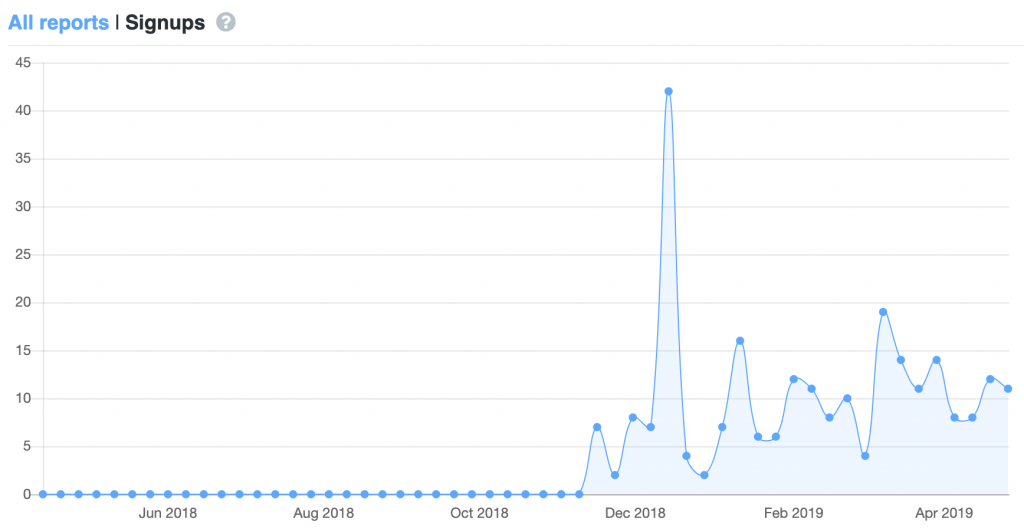When I am working with clients with community management, one of the first things I want to understand is how they, not me, define success. What metrics are they tracking?
One of the common metrics for success in communities is people who register, sign up, or otherwise provide some kind of identity to a community. Now, this is important, but we need to look at what it really means and today I want to pragmatically explore how to really understand the role of sign-ups within your broader community strategy…and why it isn’t always critical.
For most public communities, I generally recommend they make their community platform open for reading and consuming without requiring an account. This provides an opportunity for people to “try before they buy”. It also means though, that these faceless strangers may get significant value out of the community (such as finding answers to their questions), without ever needing to sign up.
Now, as part of their community management dashboard (see my other pieces on ‘How To Track Community Growth In Forums‘ and ‘Measuring Community Health‘), I still want to track sign-ups, and here is an example of a client I am working with (they gave me permission to share this, anonymously):

What this graph tells me is that their community management is offering more and more personalized value to their members.
Given that their forum is open to the public to read, people need a reason to sign up for an account. Most people don’t sign up for a community unless (a) they are required to, or (b) they want to feed in in some way, such as asking a question or voting in a poll. Sadly, they won’t sign up just because they like you.
As such, when we see a growth in sign ups, it tells me that more and more people are consuming value in the community and they are inspired to feed in and participate, which is a good sign.
If this graph was flatlined, it wouldn’t merely just suck, it would tell me the opposite: we need to provide a clearer way for them to understand the value of participating and how they can see their own reflection in the community.
Now, many communities will track sign-ups as a key metric and often ignore the anonymous views of the community. But, let’s look at the same community’s data when it comes to people browsing the forum without being logged in:

Yeah, baby! This is looking almost like a hockey stick curve.
What this tells me is that the value encompassed in their community forum is seeping out more broadly and pulling people in to browse the value there.
This is a critical metric. If we don’t see this graph growing, it means that either (a) the community is boring and doesn’t offer enough value, (b) people don’t know about it, or (c) both. :-/
As such, always focus on getting this anonymous traffic graph up. Here are a few recommendations:
1. Optimize your SEO
Sure, I get it.
A lot of people who waffle on about SEO seem to be talking bollocks, but it is essential. There are bags of tutorials, books, and videos about how to do SEO well. As part of your community management, focus on how you can optimize how your community web pages perform publicly and how they are indexed.
So, to get started, go and see my guide for how to do SEO well.
2. Integrate into your other infrastructure
Far too many communities are not accessible from the other trappings of a project or product. Ensure people can know about your community and link to it easily from:
- Your website (ideally in the top-level navigation.)
- Social media accounts.
- Blogs and other publishing mediums.
- GitHub/GitLab repositories, and
README.md/CONTRIBUTING.mdfiles. - Email messaging, newsletters, and other outreach.
- Event presentation slides, handouts, and other materials.
Don’t just do this once: keep your community in the consciousness of your users and customers week in, week out.
3. Regularly feature community management work on social media
If you have rich, interesting content in your community, you need to post about it every week on your social media networks. Social media is a significant driver of traffic to websites, so ensure you are utilizing it as a tool to get people to your community.
Don’t just broadcast, but invite participation in your community. Have calls for feedback, input, and other engagement: it all drives participation.
4. Regularly think about how to pull people in
There always needs to be a reason for people to go to your community. What is it?
Sure, providing support is useful, but that will only bring people in when they have questions. As such, think of other ways to get them into your virtual clubhouse.
Publish tutorials, guides, demos, and feature/release updates to your community. Promote these on social media and beyond. Give people a reason to check the community every day.
As one example, Fractal Audio Systems have a fantastic community (see my piece on them here), and they regularly publish firmware updates for their products which have new features and capabilities.

As such, many people (myself included) regularly check the community to discover these new features, learn how to use them, and more.
These are just a few suggestions scratching the surface of how you build this anonymous traffic. What recommendations do you have to grow it? I am always eager to learn new approaches and methods, so get them in the comments – thanks!








